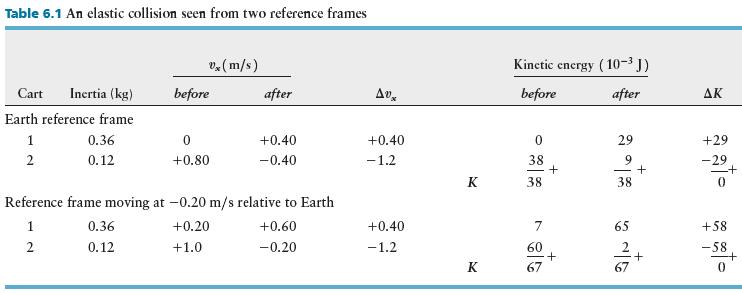Objects (1left(m_{1}=1.0 mathrm{~kg} ight)) and (2left(m_{2}=3.0 mathrm{~kg} ight)) collide inelastically. The velocities are (v_{1 x, mathrm{i}}=+4.0 mathrm{~m}
Question:
Objects \(1\left(m_{1}=1.0 \mathrm{~kg}\right)\) and \(2\left(m_{2}=3.0 \mathrm{~kg}\right)\) collide inelastically. The velocities are \(v_{1 x, \mathrm{i}}=+4.0 \mathrm{~m} / \mathrm{s}, \quad v_{2 x, \mathrm{i}}=0, \quad v_{1 x, \mathrm{f}}=-0.50 \mathrm{~m} / \mathrm{s}\), and \(v_{2 x, \mathrm{f}}=+1.5 \mathrm{~m} / \mathrm{s}\).
(a) What is the coefficient of restitution \(e\) ?
(b) Make a table like Table 6.1 showing the kinetic energy converted to internal energy both in the Earth reference frame and in a reference frame moving at \(v_{\mathrm{EM} x}=-1.0 \mathrm{~m} / \mathrm{s}\) relative to Earth.

Fantastic news! We've Found the answer you've been seeking!
Step by Step Answer:
Related Book For 

Question Posted:





